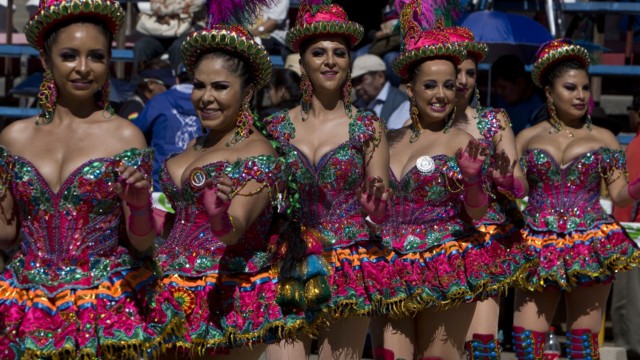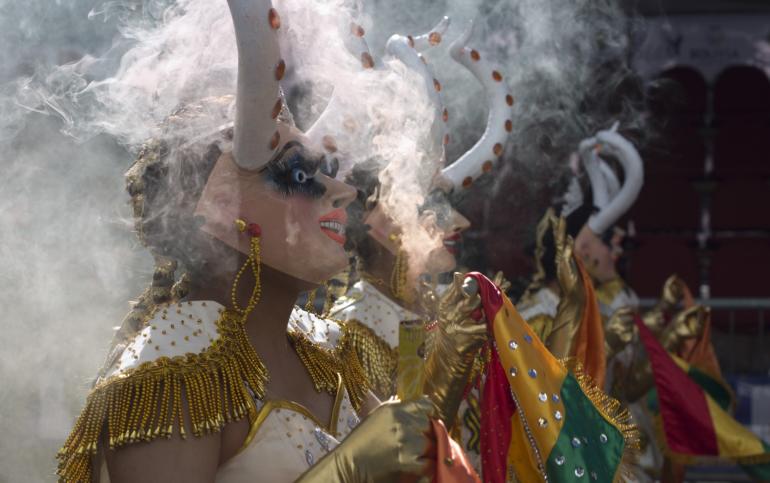Carnival season is in full swing across the world. In Bolivia, hundreds-of-thousands fill the streets of one city, joined by angels and demons.
CGTN’s Joel Richards has more.
This is the Diablada: the “dance of devils.” It is perhaps the most emblematic of dances in the Oruro carnival in Bolivia. Here, one of this carnival’s oldest groups, the Authentic Traditional Diablada, starts its three hour pilgrimage that will end with them on their knees, paying homage to the patron of Oruro, the Virgin del Socavon.
Leading the troop of devils is Jony Lopez, dressed as the Archangel San Miguel.
“Through the Diablada and our dance we express and represent what is the struggle between good and bad,” Jony Lopez, who plays the Archangel San Miguel, explained.
This dance is the centerpiece of the Oruro carnival, combining indigenous religious ceremony with Spanish carnival and Catholic beliefs. Its cultural importance has even brought it official recognition by UNESCO.
Starting early Saturday morning, brass bands provide the music and rhythm to the traditional dance as they march through the city. More than 50 groups take part in the Oruro carnival, bringing together tens of thousands of dancers. It is a unique carnival in Latin America, held in a city that sits at an altitude of over 3,700 meters and whose costumes, dance and music evoke its indigenous and colonial past.
People here spend months preparing for it.
“The archangel was handed over to me by my father, and a cousin of his handed the role to him,” Lopez said.


Jony not only inherited his role as archangel, but also estimates that over 100 members of his extended family take part in this carnival. This includes his cousin who dances as a devil, and his cousin’s wife who dances as a bear. This year, their 14-year-old daughter also has a dancing role.
“The group is known for keeping with its traditions. We have always kept the dance the same and we have not changed that, though other groups have, we have kept the same dance and choreography for over 100 years.”
Jony leads the Diablada in a suit that weighs over 30 kilos.
“The archangel goes first, showing its authority, directing the devils so that at the end they go into the church. It shows that he has won, that good overcomes everything.”
After three hours dancing and marching in the heat, the Authentic Traditional Diablada reach their destination. At a church, they give thanks to their Patron, the Virgin del Socavon for watching over them. Overcome with emotion, they leave the church, to rest and prepare themselves.
 CGTN America
CGTN America
 Dancers perform the traditional “Diablada” or Dance of the Devils during the Carnival in Oruro, Bolivia, Saturday, March 2, 2019. (AP Photo/Juan Karita)
Dancers perform the traditional “Diablada” or Dance of the Devils during the Carnival in Oruro, Bolivia, Saturday, March 2, 2019. (AP Photo/Juan Karita)


